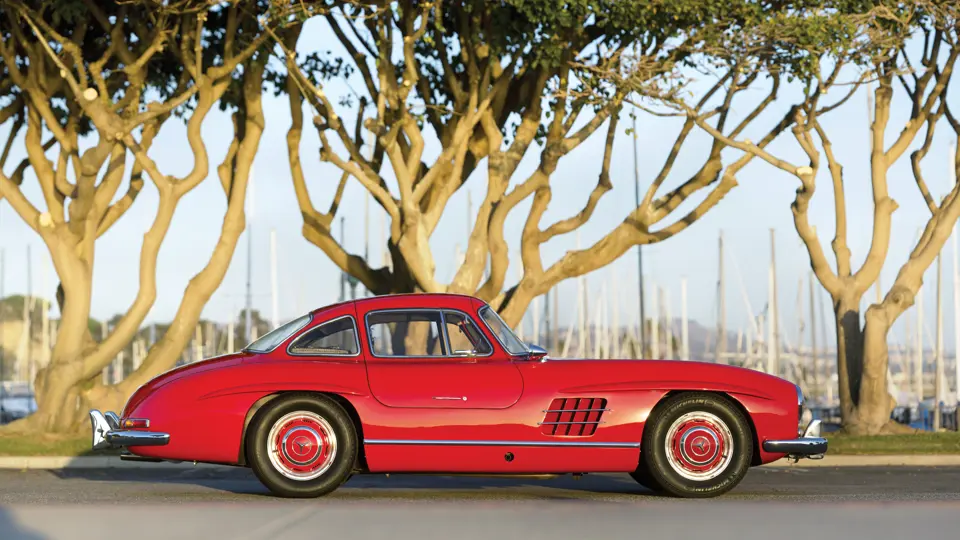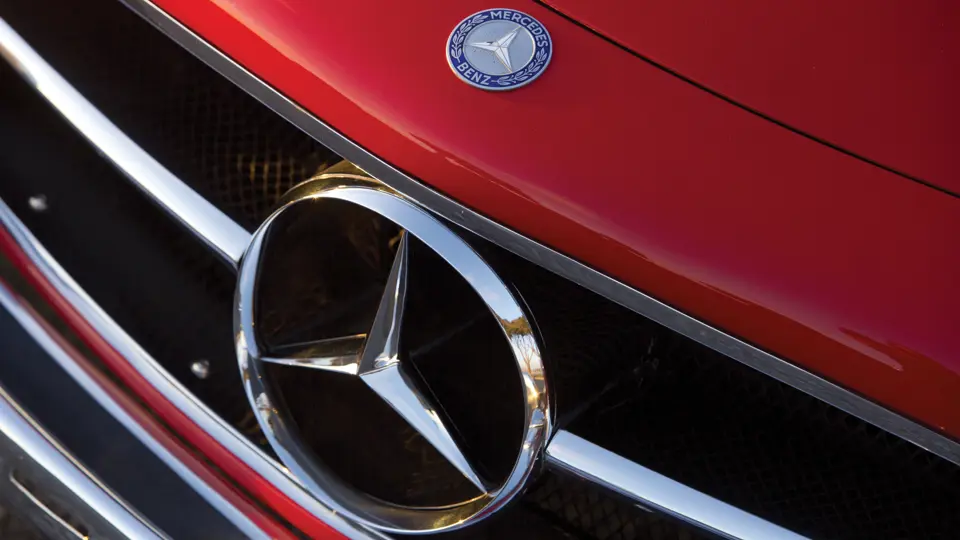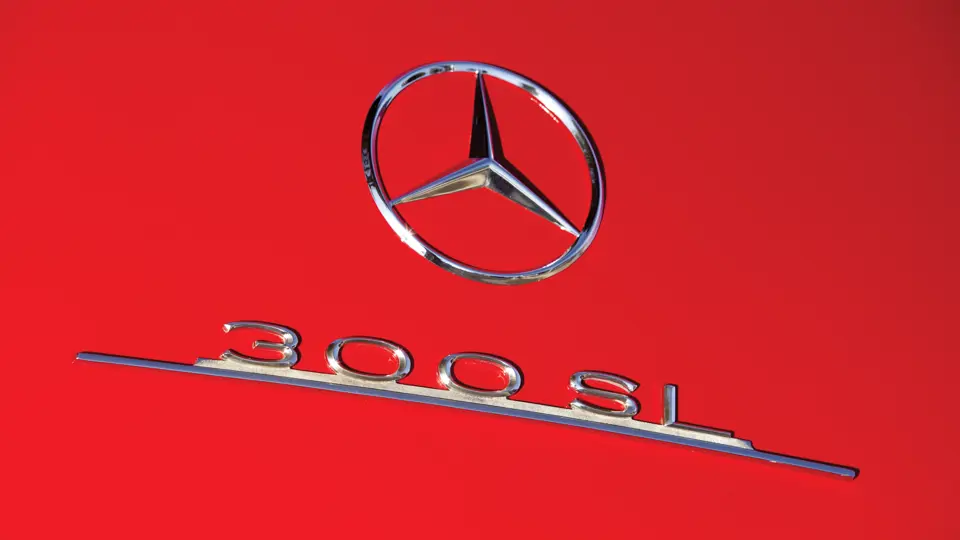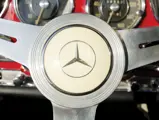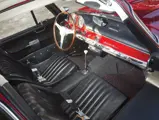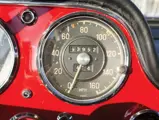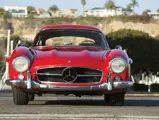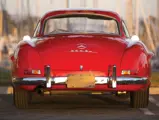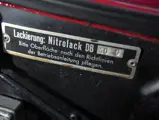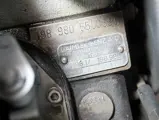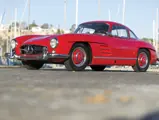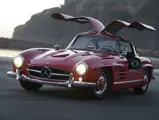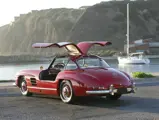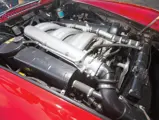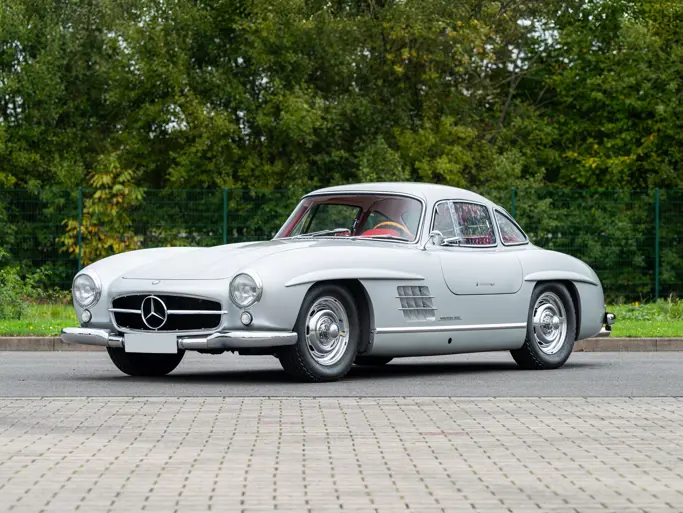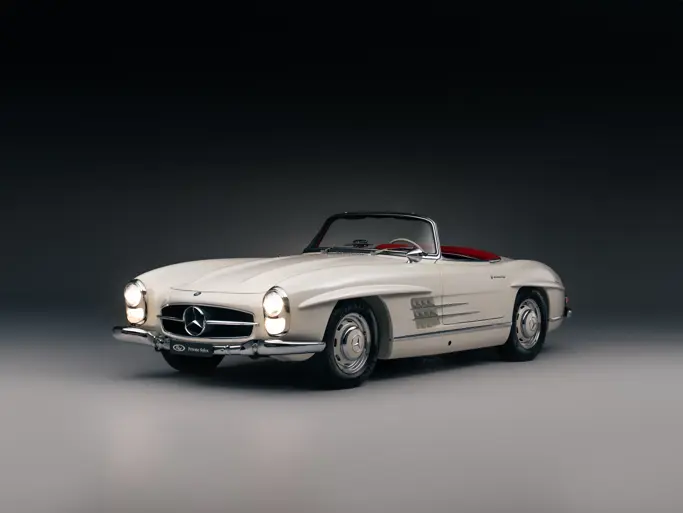215 hp, 2,992 cc SOHC six-cylinder engine with Bosch mechanical fuel injection, four-speed manual transmission, coil spring independent front suspension, coil spring and swing-axle rear suspension, and four-wheel hydraulic drum brakes. Wheelbase: 94.5 in.
• A 1955 example with a “curved star” grille
• Includes fitted luggage and a factory belly pan
• Refinished in red with a black leather interior
• Iconic, matching-numbers Gullwing
The 1954–1957 Mercedes-Benz 300SL Gullwing Coupes are perennial contenders for the best sports car of all time. The fact that the 1,371 steel-bodied and 29 alloy bodied cars can still run with (and away from) modern traffic puts them in the first tier of collectibles. If ever there was a case of “win on Sunday, sell on Monday,” this was it.
The race in question was Mexico’s 1952 La Carrera Panamericana, a vicious, 2,000-mile road race, which eliminated 53 of the 92 starters and was known for being extremely dangerous—to drivers and spectators alike. A week after Mercedes had gone 1-2—it would have been 1-2-3 save for John Fitch’s disqualification—the company had 400 orders for the 155 mph 300SL Gullwing Coupes. The cars were so fast in the La Carrera that team manager Alfred Neubauer was unable to keep up with them in a Douglas DC3 spotter plane.
La Carrera was the fifth race the 300SLs had entered. The gullwing coupes placed 2nd in the Mille Miglia, 1-2-3 in the Berne, Switzerland Sports Car Race, 1-2 at Le Mans, 1-2-3-4 at the Nürburgring, and 1-2 in Mexico. La Carrera was actually an afterthought; Mercedes-Benz had planned to cease 300SL production before the November race, since the car had accomplished what the factory had set out to do. However, the company’s importer in Mexico City and U.S. distributor Max Hoffman in New York pleaded for an entry.
It was the first time a Mercedes would be introduced abroad instead of in Germany, making it clear that the U.S. was the target market. Indeed, 125 of the first 166 300SLs built in 1954 were sold through Hoffman’s New York and Los Angeles dealerships. In a world where the VW beetle could do 70 mph and a Porsche might touch 100 mph, the 300SL could hit 161 mph with the right gearing, which is still impressive today.
While a 1954 Cadillac Eldorado cost $5,738, the new 300SL retailed for $6,940, almost 20 percent higher. The rich and famous flocked to the showrooms (or most likely had the cars delivered). First-year owners included the Duke of Edinburgh, King Hussein of Jordan, King Baudoin of Belgium, the Ali Khan, Argentine dictator Juan Peron, King Constantin of Greece, and movie stars like Sophia Loren and Zsa Zsa Gabor.
Mercedes-Benz withdrew from racing after the 1955 Le Mans disaster, but privateers flocked to the tracks with their 300SLs, and the factory was happy to help them.
John Fitch and Olivier Gendebien won their class in the 1955 Mille Miglia, then Gendebien won the Liege-Rome-Liege and Alpine rallies. W.I. Tak won the Tulip Rally, Werner Engle won the European Touring Car Championship, Armando Zampiero won the Italian Sports Car Driver’s Championship, and Paul O’Shea won the SCCA’s D Production Class in the U.S. In 1956, Prince Metternich finished 6th in the Mille Miglia, Shock and Moll won the Acropolis and Sestriere rallies and the European Rally Championship, Stirling Moss was 2nd in the Tour de France, and Willy Mairesse won the Liege-Rome-Liege race.
The car on offer today is a “matching-numbers” example that was built in August of 1955. It is one of the earliest cars to be fitted with the “curved” three-pointed star in the grille. The body is steel, and the doors, hood, and trunk are aluminum. It remains a mechanical marvel, still fascinating to engineering students 57 years later. The space frame is ingenious, and the high, wide door sills contribute to the torsional stiffness sacrificed for the gullwing doors, and the tilt wheel facilitates driver access. The Bosch mechanical fuel injection works smoothly enough for daily use, and the engine is canted about 30 degrees to enable the hood line to be brought down.
The cabin is light and airy, and fitted luggage was available to make the most of the rear space. The streamlined belly pans, which assisted the car to its top speed, also contained the engine heat. It was common in the day to see 300SLs gliding down the Promenade des Anglais in Nice, with the gullwing doors “up” for improved airflow, but perhaps it was also a matter of style.
Much of the car’s early history can be traced in Illinois. It was owned until 1964 by a body shop mechanic at Loeber Mercedes-Benz in Lincolnwood, and then passed to Josef L. Klingler, a well-known collector with 130 cars. Klingler campaigned the car in several SCCA vintage events from 1987–1989. Later, Mr. Steven Schultz acquired the Gullwing in 2004. Schultz kept the car until 2012, when he sold it to the previous owner.
This Gullwing was recently disassembled and repainted in red, and the chrome was also replated. Showing an indicated 53,943 miles, it retains its black leather interior and fitted luggage, and it is also equipped with the factory belly pan. Along with a handsome Nardi steering wheel, it has the correct Becker Mexico radio and is serviced and ready to go. Nicely presented, this 300SL is reported to run and handle well, especially on the open road, its natural element.
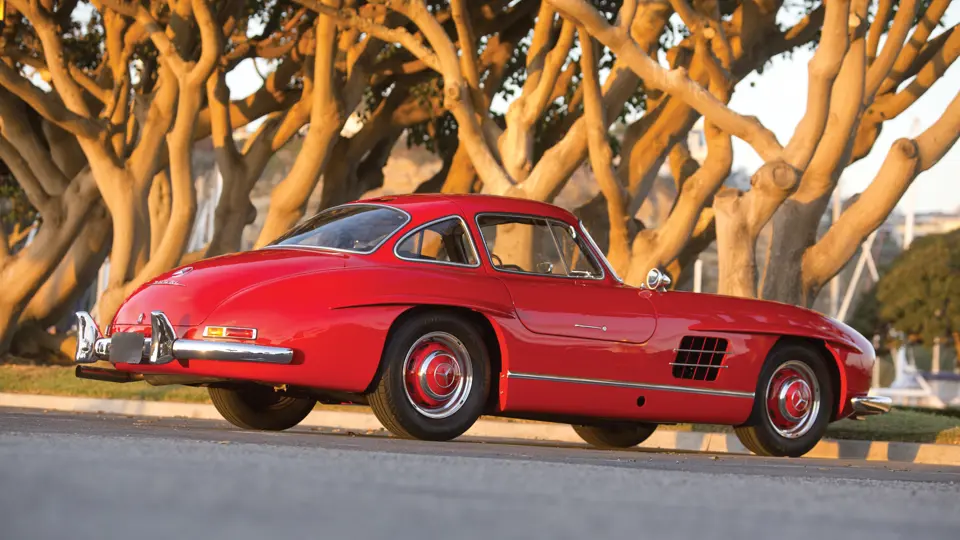



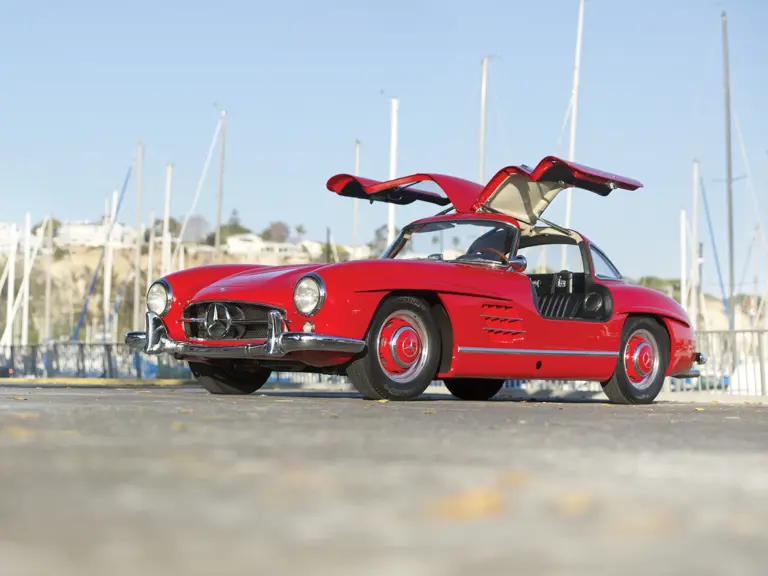
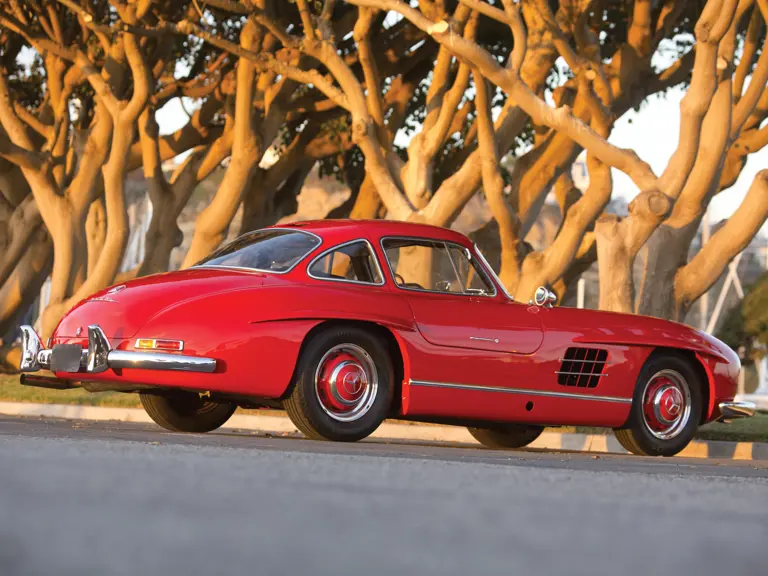
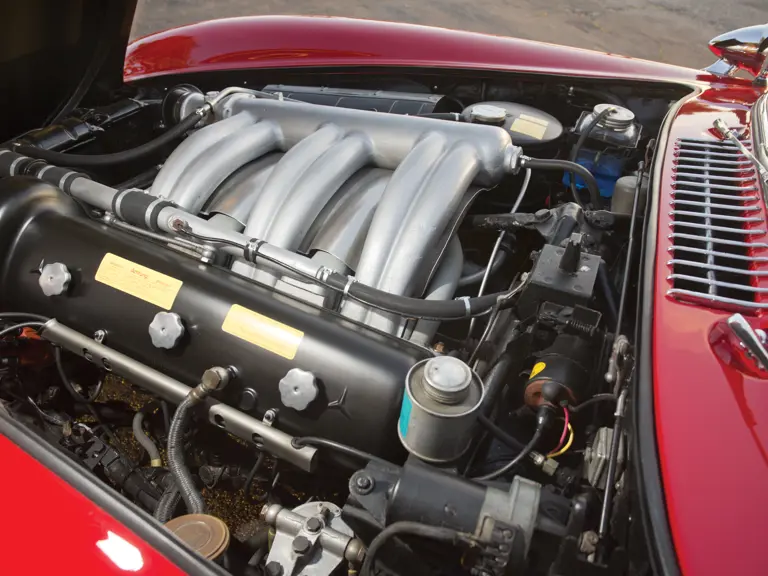
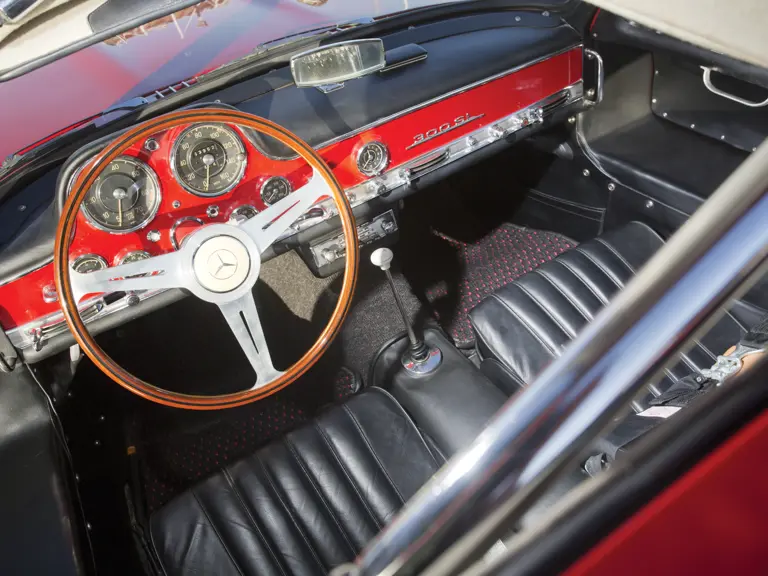
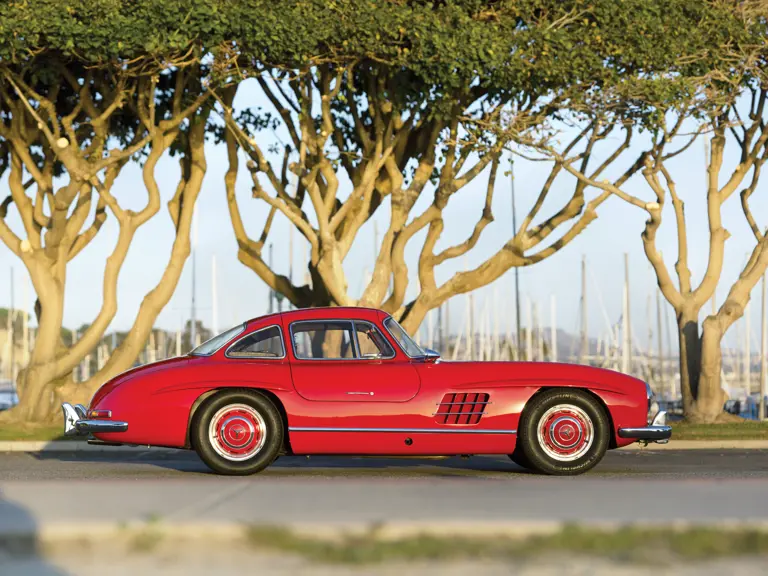
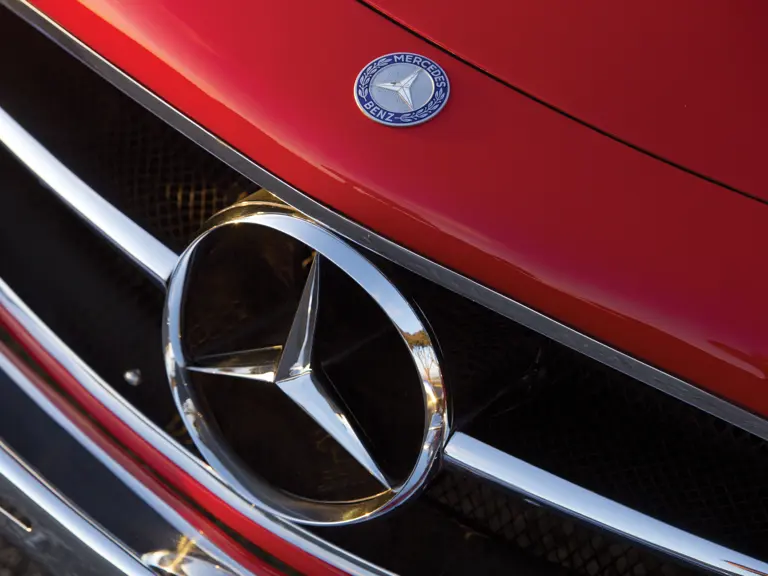


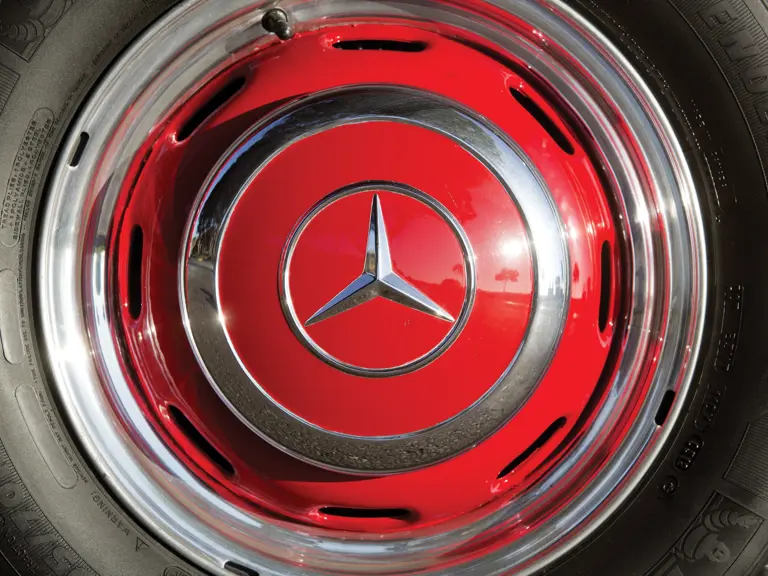
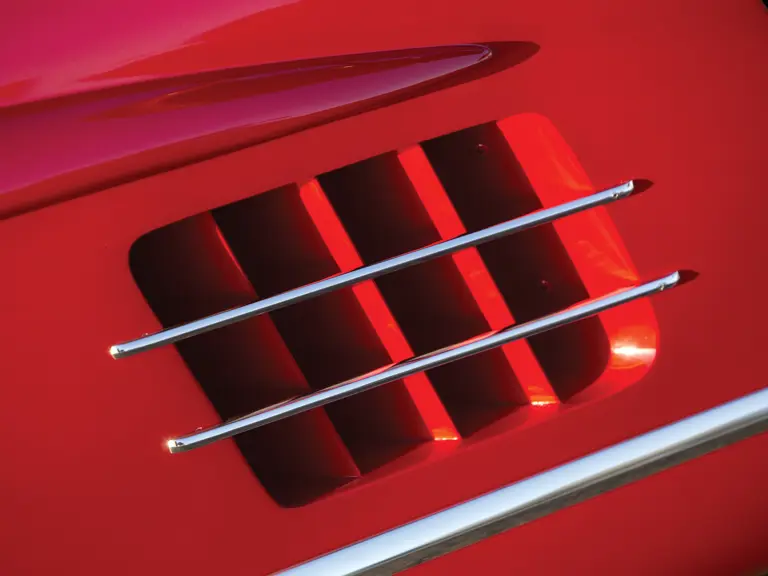
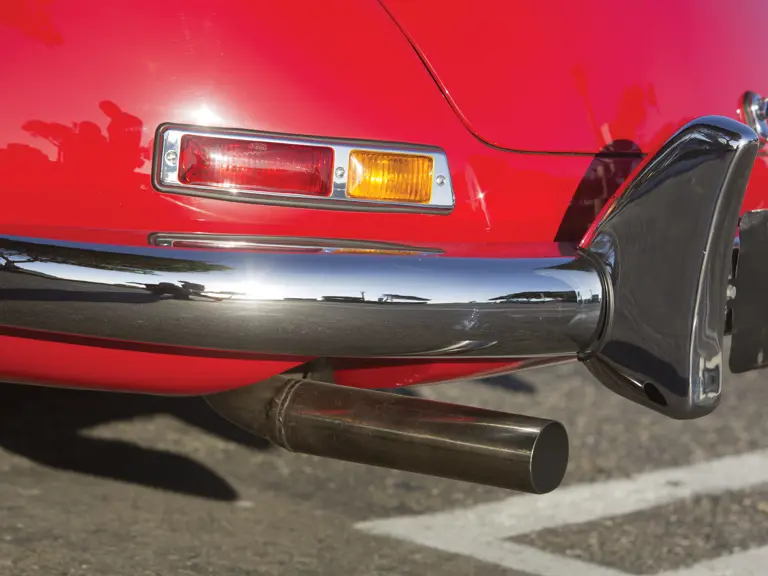
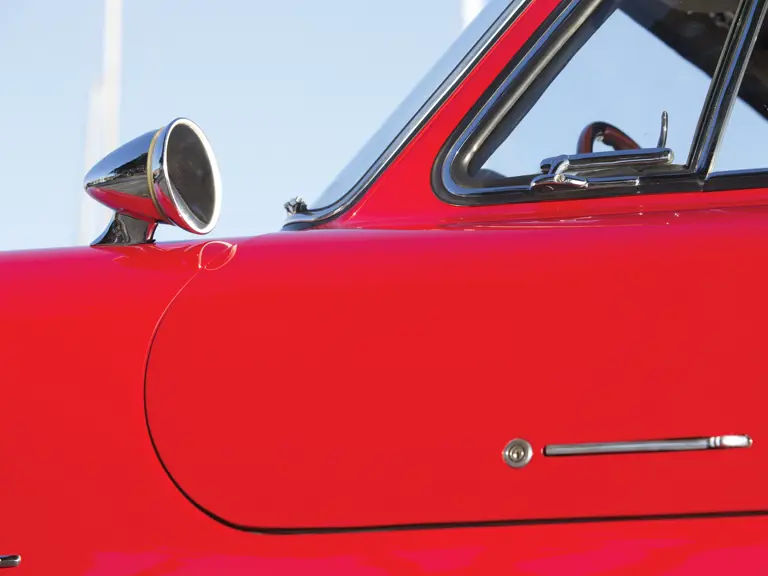
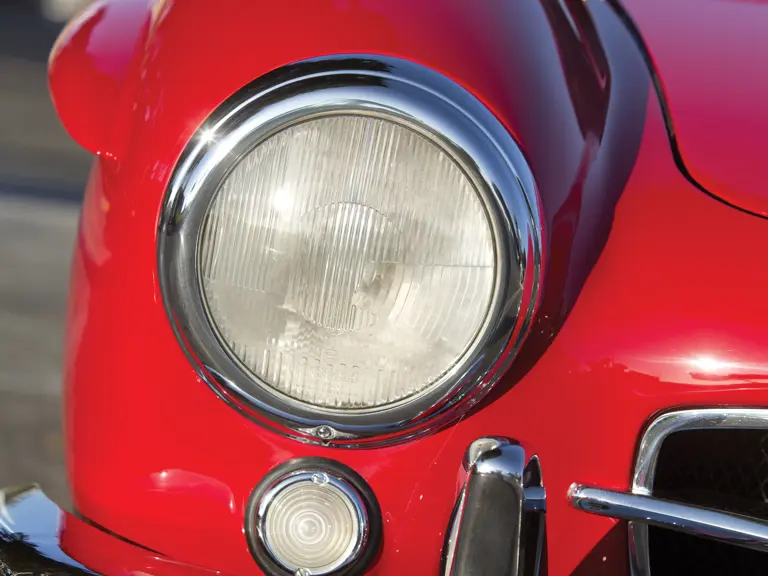

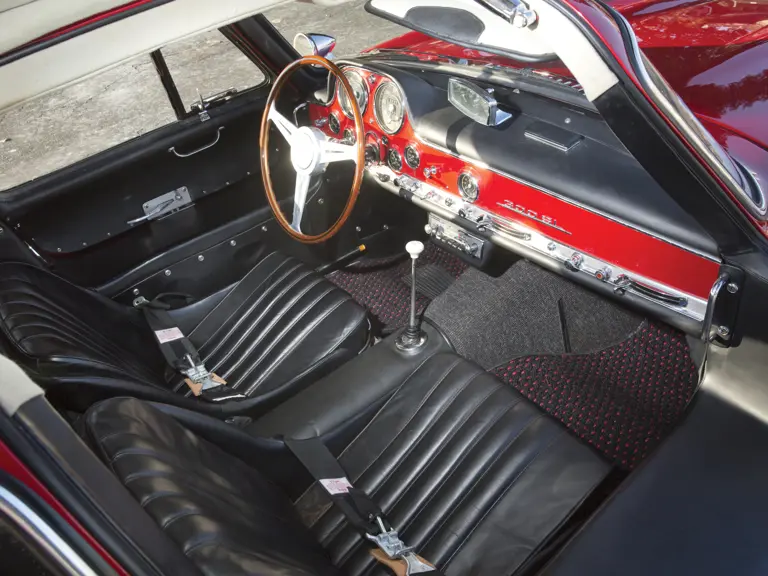

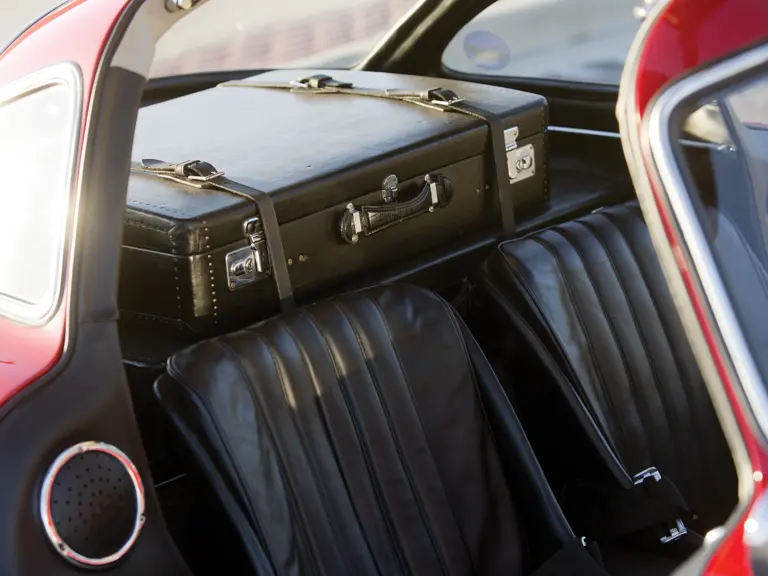

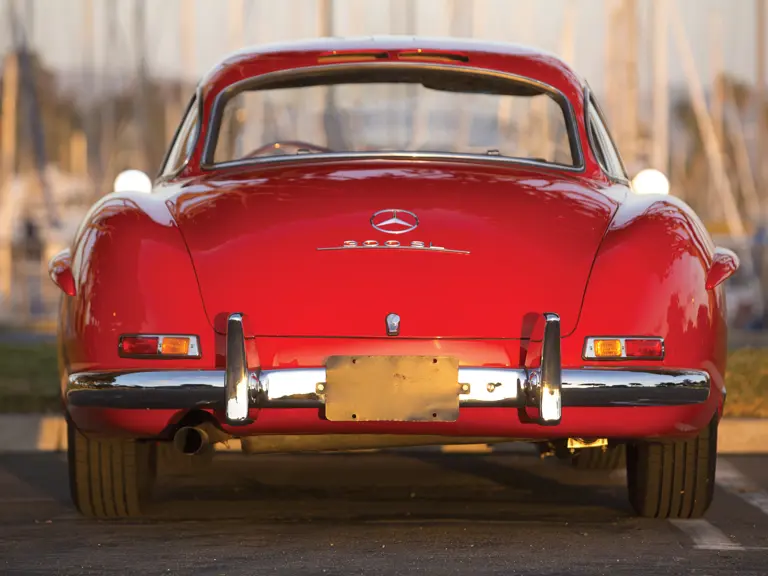
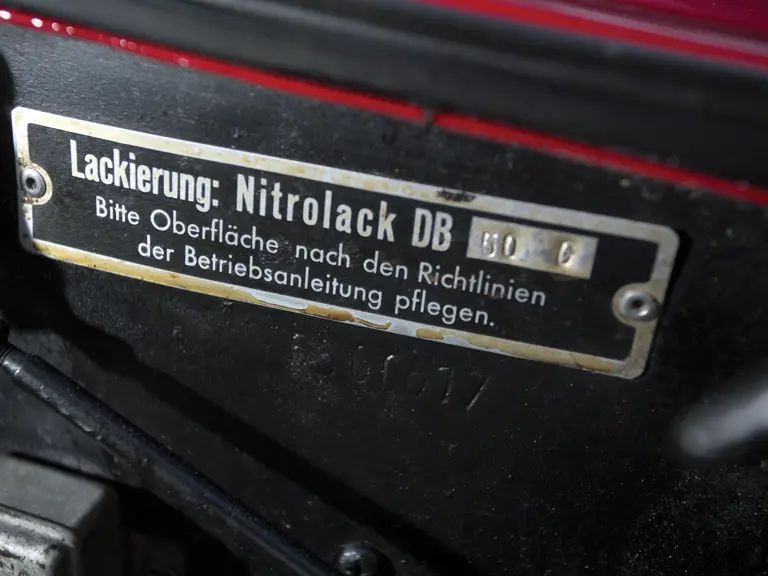
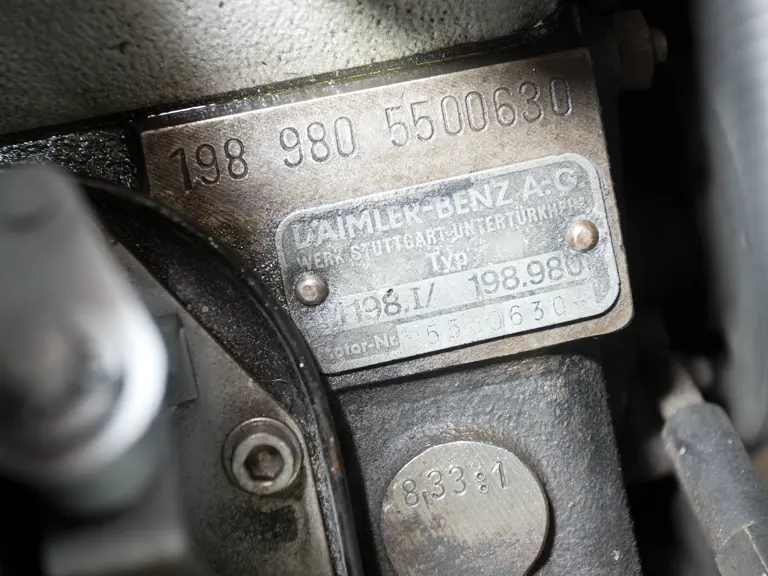


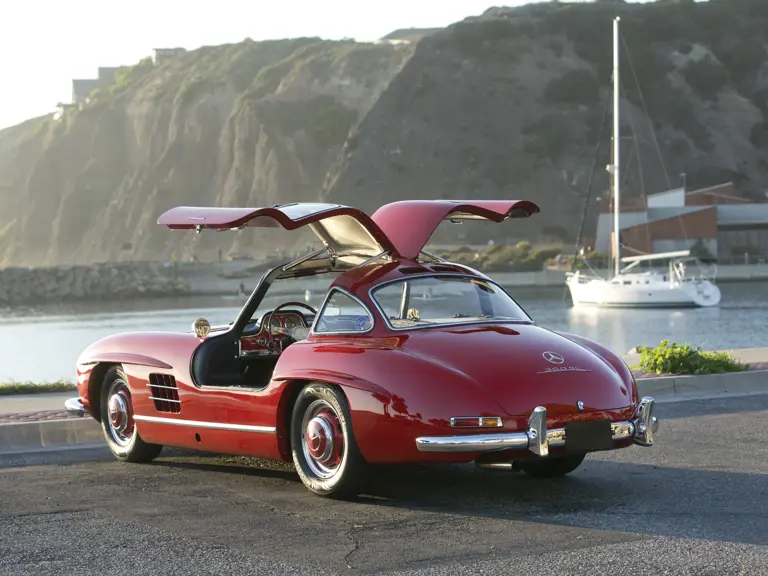
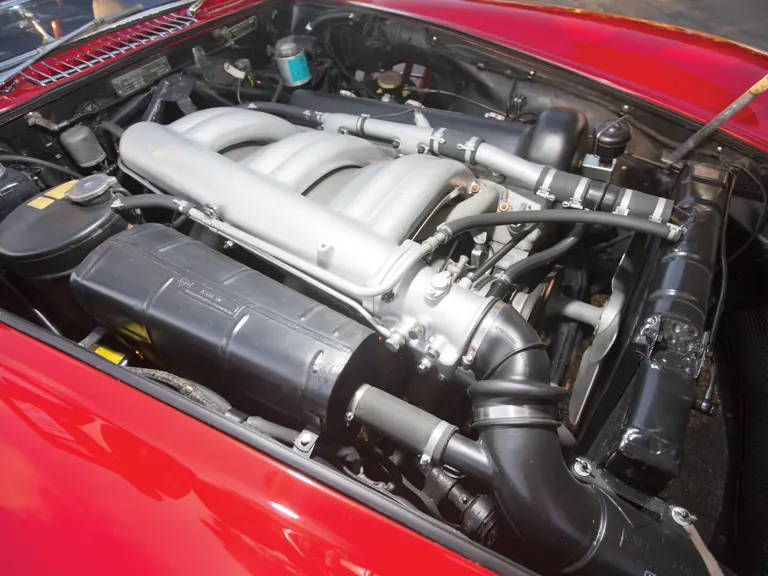
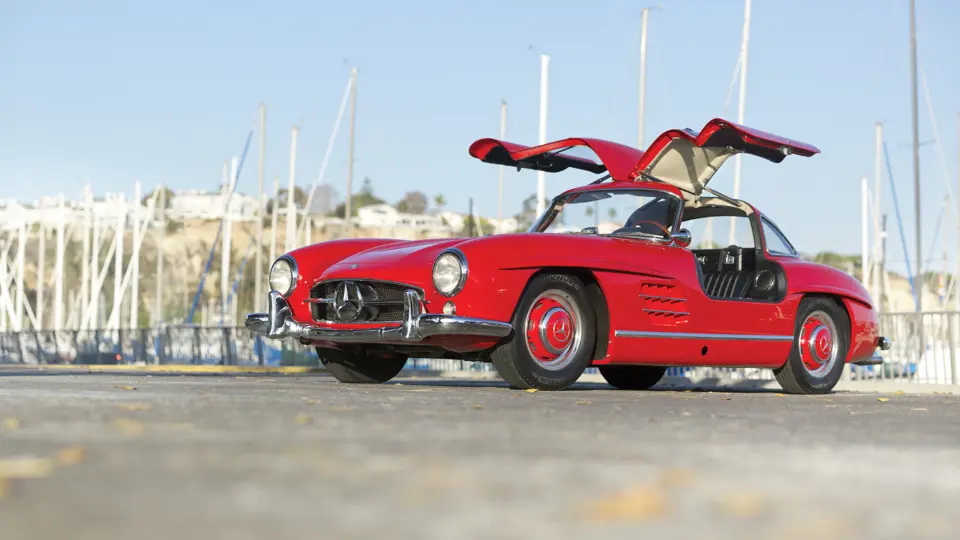
 | Phoenix, Arizona
| Phoenix, Arizona
